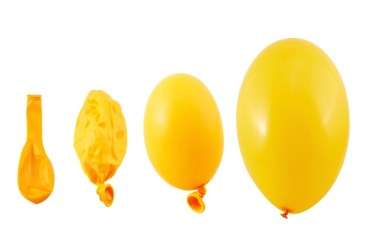Science Experiments for Kids: Bottle Balloon Blow-Up

In this article, you will find:
Balloon in a Bottle Experiment
This experiment demonstrates that changing the air pressure inside a bottle with a little heat can make enough of a change to completely change the position of a balloon on the top of the bottle. This experiment requires precise timing and moves very quickly, so it's more suited for your child to be an observer, not an active participant. In order to help him feel more involved, you can designate him as the "official experiment recorder." Give him your cell phone or video camera to film the experiment as you do it.
What You Need
- Large glass jar (like a pickle jar)
- Balloon
- Water
- Tissue, or half a piece of paper towel
- Tongs
- Matches
How to Play 1. Place the neck of the balloon over the neck of a faucet. Turn the water on low and fill the balloon with just enough water so that it is a little too big to fit through the mouth of the jar. Tie off the neck of the balloon.
2. Grasp the piece of paper towel or tissue with a pair of tongs, and light it on fire. Drop it into the jar.
3. Very quickly, put the water balloon on the top of the jar, and watch what happens. The balloon will dance, and then be sucked right into the jar.
What's Going On At the beginning of the experiment, the air pressure inside and outside the jar is the same, but as the paper burns, it heats up the air inside the jar. The heated air expands, taking up more room, but the balloon is impeding the air's escape route. As the heated air pushes around the balloon to get out of the jar, the balloon "dances" out of the way. Once the fire goes out, the air in the jar cools, but since the water balloon is blocking the opening, no new air can get into the jar. That means the air pressure in the jar is lower than that of the pressure outside the jar. The outside air pressure exerts force on the balloon, pushing it into the jar.